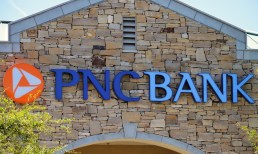As inflation causes consumers to trade down and spend less, the notion of merchants adding a surcharge to credit card transactions is controversial and can be a deal breaker unless establishments are upfront about it, which is the route savvy merchants are taking.
In studying consumer perceptions around credit card surcharges, PYMNTS found that awareness plays a vital role. For example, the study “Credit Card Surcharges: How Cardholders React to Extra Costs,” a PYMNTS and Payroc collaboration based on surveys of over 2,500 consumers, found that people were asked to pay surcharges 9.2% of the time, and they did so 85% of the time.
Conversely, 71% of cardholders who were not asked to pay a surcharge on recent credit card transactions said being asked to pay one would decrease their satisfaction with the merchant.
That’s not surprising to Payroc President Adam Oberman, who told PYMNTS’ Karen Webster that a fear factor about surcharges stops many businesses from charging these fees.
“Is their competitor doing it? Is the restaurant down the street doing it? Is the local bakery doing it?” Oberman said. “I don’t want to be the only one in my community doing it. That’s honestly the largest thing. It’s the scare of the unknown and what they’re getting themselves into, being competitive in their marketplace.”
As merchants seek to recoup interchange fees with surcharges at a perilous moment for added fees, programs like Payroc’s Reward Pay enables them to control how much or little they collect in surcharges, allowing businesses to cover part of the cost without alienating customers.
Advertisement: Scroll to Continue
He said the surcharge compliance solution is a hit with merchants as adoption has increased from 30% monthly since early 2022 to current monthly adoption in the 50% to 55% range.
“Merchant processing is typically one of the five largest expense items on a P&L when it comes to running a business,” he told Webster. “If they’re going to look at their bottom line, they need to see exactly what they could eliminate or reduce. A lot of people were open to [Reward Pay] because of the hard times that they’re going through, and the attrition is next to nothing.”
Secretive Surcharging Backfires
A key learning from PYMNTS research into surcharges — which are legal in 48 of the 50 states — is that consumers want to be told when paying by credit card will incur additional fees and given options to pay in ways that don’t carry surcharges from debit cards to cash.
Oberman shared a recent personal experience to illustrate.
“This just happened to me at a restaurant,” he said. “It was a $50 bill, and they assessed a surcharge of 3.99%. I laughed, and the lady behind the counter goes, ‘Why are you laughing?’ I said, ‘There’s no signs in here that say you’re allowed to surcharge.’ I said, ‘I’m very familiar with the business, but it sounds like your partner is not educating you on what is compliant and legally what you should be doing.’”
While Oberman was philosophical about it, the average consumer might not be. For that reason, Payroc decided early on to “overeducate, overemphasize and overcommunicate to clients and to cardholders. When a client signs up with us, we have signage everywhere,” he said. “We educate the merchants and the clients on what to do and what not to do.”
That above-board approach wins with consumers who can either decide the extra 4% is no big deal or select another payment option that doesn’t carry surcharges or usage fees.
Absent that messaging, it “brings a negative connotation on surcharging, what they’re doing and how they’re doing it, and it hurts for companies that are doing it the legal way, the compliant way and the right way. It makes those companies look worse when you’re going to resell or sell a new client on the services.”
He said choice must be communicated along the value chain from card issuers to merchants to cardholders most importantly.
Read more: Study Finds Hidden Surcharges Sour Consumers’ Impressions of Merchants
The Bottom Line
A conundrum in the surcharge debate is that consumers want the rewards, points and airmiles that come with credit card use, and surcharge calculus must take this into account.
“That’s why, with our compliance software and our embedded payments, we’ve embedded that into the terminals to give that client the choice on the actual screen to say you will be surcharged on a credit card, or if you like to use a debit card, or if you’d like to pay by cash, there is no surcharge,” Oberman said.
PYMNTS research found that some 44% of consumers will shop around when faced with a surcharge, but 67% take it in stride without drawing a negative inference on the merchant. That’s a function of managing expectations with surcharging transparency.
Going back to his recent restaurant experience, Oberman said: “I will second guess going in the future because it was hidden. If it was portrayed the right way and there was signage and they were clear about what they were doing, I’d have a way different view. But when you’re hiding something from the consumer, the cardholder, it’s hard to swallow that pill.”
Even so, Oberman said the success of Payroc’s own surcharge program gives him confidence that consumers will pay willingly when aware, giving merchants a bottom-line boost without angering customers.
“As far as inflation rising, I cannot see this program going away,” he said. “Our personal adoption rate is going through the roof. We’re growing 20% month over month, not only on our new additions, but on our revenue and our volume. The numbers speak for themselves.”



